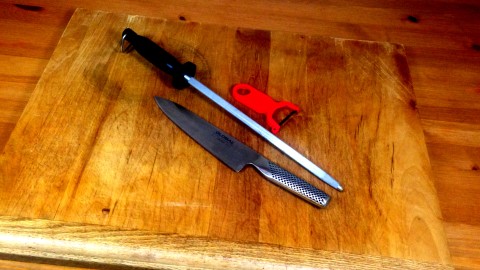
Stocking your kitchen with equipment is far easier than you think.
You already have most of what you already need, and the rest can be bought for cheaper than you may realize.
We talked about the only three pieces of cookware you need in the last article. In this one, we’ll look at kitchen knives and see that you only really need one (as well as a couple of simple accessories).
Knives (and Knife Accessories)
Unless you’re buying everything cut up already, you’ll need to harness your inner samurai and use some knife skills.
Most people will tell you that you need three knives. They are wrong.
You need one kitchen knife.
Just one. And a couple of accessories. Save the other two knives for when you’re more advanced, Yojimbo.
A Kitchen Knife
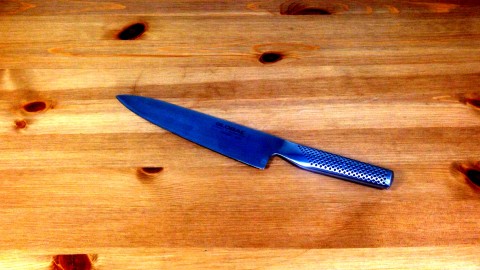
You have three options when it comes to a kitchen knife:
- A chef’s knife–These are the most common western-knife, and feature a long, slightly-curved blade.
- A santoku knife–These are the Japanese equivalent of a chef’s knife, but they have a flatter blade and “divots” along the side.
- A Chinese chef’s knife–Very uncommon in western countries, but this is an underrated knife. Looks like a small meat cleaver.
Honestly, it doesn’t matter which of these you buy. You will use a slightly different technique for either one, but they are all built to get done all your basic cutting tasks in the kitchen.
Since chef’s knives are by far the most common in western countries, it’s probably the one you’ll use. But don’t discount the Chinese cleaver. Since they aren’t very well-known you can get a good one for pretty cheap.
Santokus are pretty trendy right now, and the prices reflect that, with cheaper ones hard to find.
Also, there are more knives on the market than anything else on this list, and it’s therefore impossible for me to test every one. What’s important is that a knife is two things:
- Sharp
- Comfortable
This will allow you to keep control of the knife more easily. The last thing you want to do is chop a finger off.
Here are my suggestions for chef’s knives, FWIW:
- Top of the Line–The Wusthof Classic 8-Inch Cook’s Knife. German knives are considered by most to be the best. They’re also more expensive. This one’s a classic, and loved by many.
- Best Value–The Global G–2 is a Japanese knife that Anthony Bourdain sang the praise of in his classic book Kitchen Confidential. It’s lightweight and nimble, but gets the heavy work done. It’s what I usually use.
- Good Enough–The Victorinox Fibrox gets high praise for a cheap knife.
A Honer
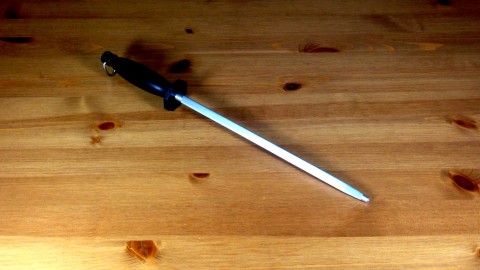
A dull knife is a dangerous knife.
I really can’t stress this enough. You really, really, really need your knife to be as sharp as possible. A dull knife is hard to control, and more likely to hurt you.
I’m sure you’re familiar with the stereotype–big French chef breaks out a big honing rod to sharpen his kitchen knife before going to town on a big pile of onions.
Well, you should be doing the same thing.
Honing your knife before every use ensures that the knife is as sharp as possible for every use, and is highly recommended.
Basic sharpening rods are cheap and available everywhere. Not the sort of thing I’d imagine there’s a lot of variability in, so just get whatever you can.
The model I use is the 12-inch Winco Sharpening Steel, and it does the trick just fine.
A Peeler
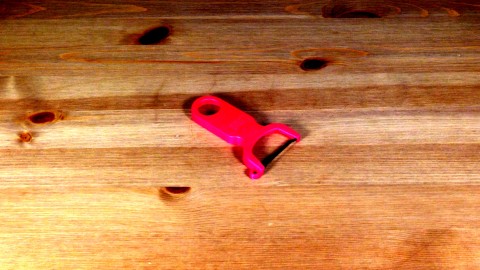
Yeah, I know. A peeler’s not technically a knife, but it does a similar job. So it’s here.
A lot of people will tell you that you need to have a paring knife. These people are wrong.
If you’re starting out, the only knife task you need to know that you can’t carry out with a big chef’s knife is peeling, and a dedicated peeler is the way to go.
Fortunately, peelers are one of those rare categories where the best product on the market is also one of the cheapest, so don’t hesitate to pick up my favorite, the Kuhn-Rikon peeler.
A Cutting Board
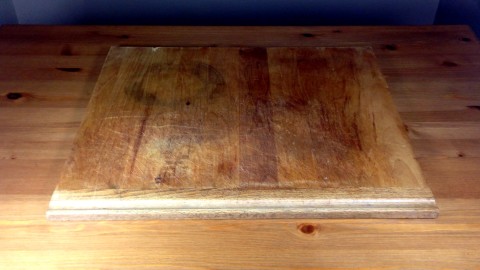
A dedicated cutting board is essential. There’s no better way to dull your knife than cutting on a surface that isn’t designed for it.
First off, check if you have a wooded cutting board built into your kitchen. Everywhere I’ve ever lived has had one, so, score.
If not, you’ll want to pick up a wooden or plastic cutting board. Plastic is cheaper and can go in the dishwasher, though it can slip around more easily and won’t last forever.
Never go for glass, as it will dull your knife.
I’ve always used the built-in cutting board in my kitchen, but if you don’t have one, this one gets solid reviews.
Just like you don’t need to buy big sets of pots and pans, you also don’t need to buy huge knife sets.
Best to put that money towards one good knife and chopping board (if you need it), as well as a cheap peeler and honer.
In the next article we’ll look at the six kitchen utensils you need to have (and ignore all the rest).
 I'm a science geek, food lover, and wannabe surfer.
I'm a science geek, food lover, and wannabe surfer.
Comments on this entry are closed.